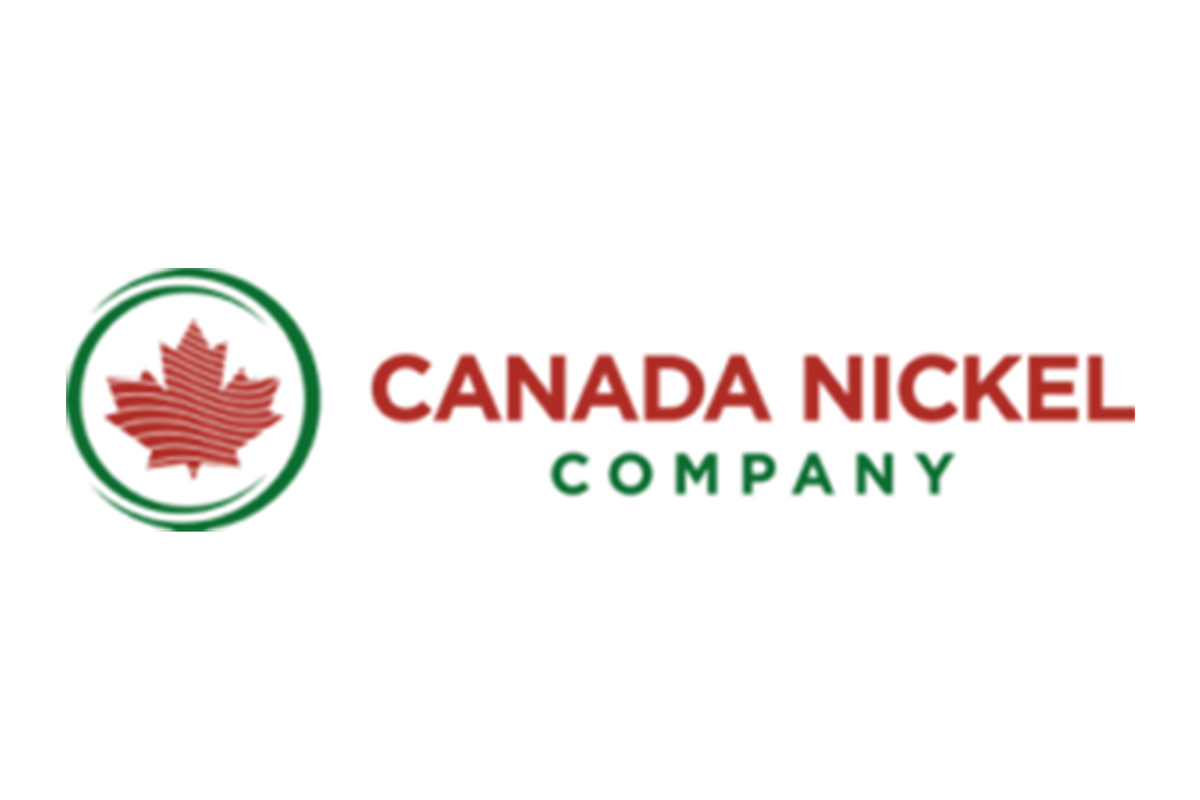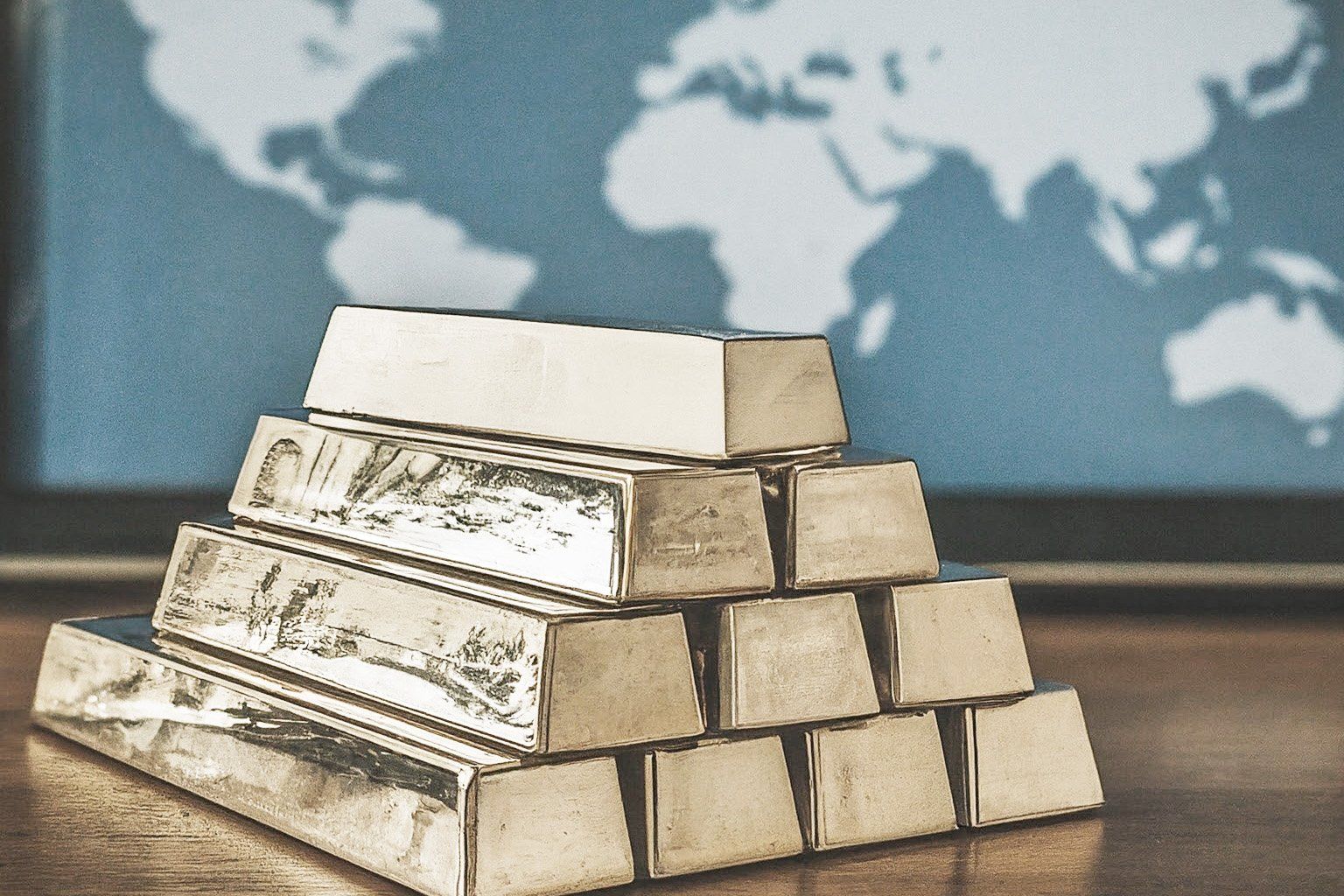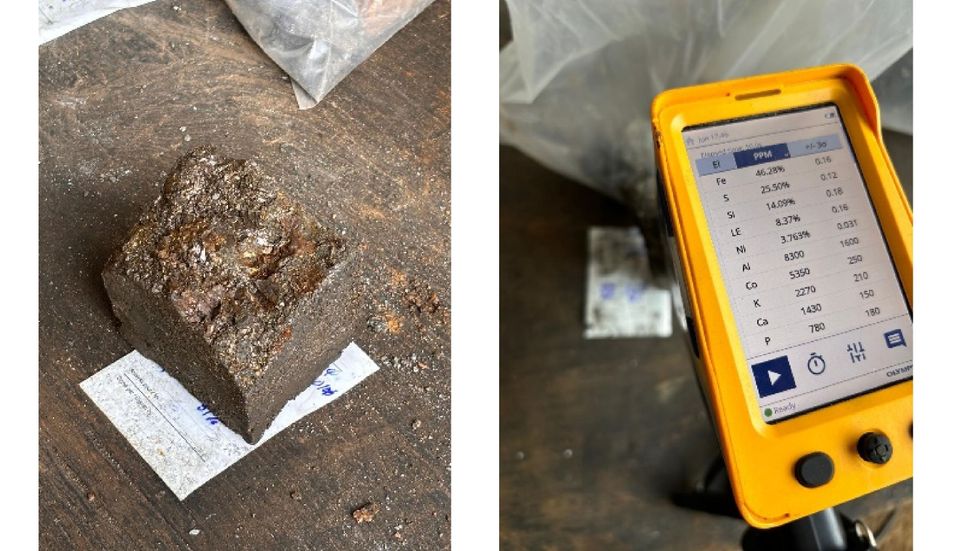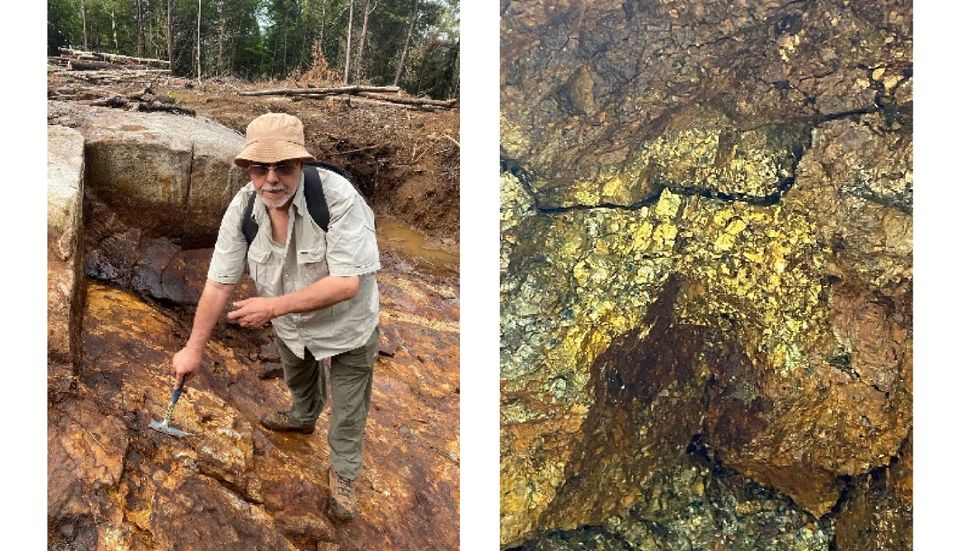Horizonte Minerals Plc, (AIM: HZM; TSX: HZM) (the "Company" or "Horizonte"), the nickel development company focused on Brazil, announces its unaudited financial results for the three month period to 30 September 2020 and the Management Discussion and Analysis for the same period. Both of the aforementioned documents have been posted on the Company's website www.horizonteminerals.com and are also available on SEDAR at www.sedar.com .
Highlights for the Period
- Horizonte remains well-funded to advance Araguaia towards being construction ready with strong cash position of £13.6m;
- Project financing process continues to progress with a number of key milestones delivered;
- A syndicate of five international financial institutions mandated for a US$325 million senior debt facility to part fund the development of Araguaia;
- BNP Paribas, ING Capital LLC, Mizuho Bank, Ltd., Natixis (New York Branch), and Société Générale will act as the Mandated Lead Arrangers;
- Inaugural Sustainability Report published on 17 August 2020. The Company recognises the importance of conveying its efforts and achievements around the areas of environmental stewardship, social responsibility and corporate governance to its various stakeholders as it moves towards construction at Araguaia;
- The Company has continued to support local communities around the project through the provision of food parcels and health and hygiene guidance in response to the pandemic; and
- Nickel market fundamentals remain strong and are expected to benefit from global stimulus measures, with nickel price returning to pre-Covid levels of approximately US$15,700/t.
Horizonte Minerals plc
Condensed Consolidated Interim Financial Statements for the nine and three months ended 30 September 2020
Condensed consolidated statement of comprehensive income
| 9 months ended 30 September | 3 months ended 30 September | ||||||||
| 2020 | 2019 | 2020 | 2019 | ||||||
| Unaudited | Unaudited | Unaudited | Unaudited | ||||||
| Notes | £ | £ | £ | £ | |||||
| Continuing operations | |||||||||
| Revenue | - | - | - | - | |||||
| Cost of sales | - | - | - | - | |||||
| Gross profit | - | - | - | - | |||||
| Administrative expenses | (2,342,989 | ) | (1,910,913 | ) | (777,847 | )) | (941,996 | ) | |
| Charge for share options granted | - | (290,833 | ) | - | (53,662 | ) | |||
| Change in value of contingent consideration | (79,425 | ) | 145,561 | 311,735 | (46,640 | ) | |||
| Gain/(Loss) on foreign exchange | 410,804 | (21,706 | ) | (716,018 | ) | (17,657 | ) | ||
| Loss from operations | (2,011,610 | ) | (2,077,891 | ) | (1,182,130 | ) | (1,059,955 | ) | |
| Finance income | 122,907 | 50,085 | 32,177 | 16,294 | |||||
| Finance costs | (2,969,053 | ) | (222,788 | ) | (1,027,349 | ) | (75,951 | ) | |
| Loss before taxation | (4,857,756 | ) | (2,250,594 | ) | (2,177,302 | ) | ( 1,119,612 | ) | |
| Taxation | (51,071 | ) | - | (51,071 | ) | - | |||
| Loss for the year from continuing operations | ( 4,908,827 | ) | (2,250,594 | ) | (2,228,373 | ) | (1,119,612 | ) | |
| Other comprehensive income | |||||||||
| Items that may be reclassified subsequently to profit or loss Change in value of available for sale financial assets | |||||||||
| Currency translation differences on translating foreign operations | (9,232,975 | ) | (1,093,862 | ) | (1,165,298 | ) | (1,559,385 | ) | |
| Other comprehensive income for the period, net of tax | ( 9,232,975 | ) | (1,093,862 | ) | ( 1,165,298 | ) | (1,559,385 | ) | |
| Total comprehensive income for the period | |||||||||
| attributable to equity holders of the Company | (14,141,802 | ) | (3,344,456 | ) | (3,393,671 | ) | (2,678,997 | ) | |
| Earnings per share from continuing operations attributable to the equity holders of the Company | |||||||||
| Basic and diluted (pence per share) | 9 | (0.339 | ) | (0.157 | ) | (0.154 | ) | (0.078 | ) |
Condensed consolidated statement of financial position
| 30 September 2020 | 31 December 2019 | ||||
| Unaudited | Audited | ||||
| Notes | £ | £ | |||
| Assets | |||||
| Non-current assets | |||||
| Intangible assets | 6 | 8,241,277 | 39,317,506 | ||
| Property, plant & equipment | 24,924,599 | 483 | |||
| 33,165,876 | 39,317,989 | ||||
| Current assets | |||||
| Trade and other receivables | 2,391,659 | 2,381,535 | |||
| Cash and cash equivalents | 13,584,055 | 17,760,330 | |||
| 15,975,714 | 20,141,865 | ||||
| Total assets | 49,141,590 | 59,459,854 | |||
| Equity and liabilities | |||||
| Equity attributable to owners of the parent | |||||
| Issued capital | 7 | 14,463,773 | 14,463,773 | ||
| Share premium | 7 | 41,785,306 | 41,785,306 | ||
| Other reserves | (13,899,906 | ) | (4,666,930 | ) | |
| Accumulated losses | (24,743,918 | ) | (19,835,092 | ) | |
| Total equity | 17,698,255 | 31,747,057 | |||
| Liabilities | |||||
| Non-current liabilities | |||||
| Contingent consideration | 6,666,016 | 6,246,071 | |||
| Royalty Finance | 23,594,661 | - | |||
| Deferred tax liabilities | 155,692 | 212,382 | |||
| 30,416,369 | 6,458,453 | ||||
| Current liabilities | |||||
| Trade and other payables | 1,026,966 | 21,254,344 | |||
| Deferred consideration | - | - | |||
| 1,026,966 | 21,254,344 | ||||
| Total liabilities | 31,443,335 | 27,712,797 | |||
| Total equity and liabilities | 49,141,590 | 59,459,854 | |||
Condensed statement of changes in shareholders' equity
| Attributable to the owners of the parent | ||||||||||
| Share capital £ | Share premium £ | Accumulated losses £ | Other reserves £ | Total £ | ||||||
| As at 1 January 2019 | 14,325,218 | 41,664,018 | (16,990,291 | ) | (2,039,991 | ) | 36,958,954 | |||
| Comprehensive income | ||||||||||
| Loss for the period | - | - | (2,250,594 | ) | - | (2,250,594 | ) | |||
| Other comprehensive income | ||||||||||
| Currency translation differences | - | - | - | (1,093,862 | ) | (1,093,862 | ) | |||
| Total comprehensive income | - | - | (2,250,594 | ) | (1,093,862 | ) | (3,344,456 | ) | ||
| Transactions with owners | ||||||||||
| Issue of ordinary shares | 138,555 | 121,288 | - | - | 259,843 | |||||
| Issue costs | - | - | - | - | - | |||||
| Share based payments | - | - | 290,833 | - | 290,833 | |||||
| Total transactions with owners | 138,555 | 121,288 | 290,833 | - | 550,676 | |||||
| As at 30 September 2019 (unaudited) | 14,463,773 | 41,785,306 | (18,950,052 | ) | (3,133,853 | ) | 34,165,174 | |||
| Attributable to the owners of the parent | ||||||||||
| Share capital £ | Share premium £ | Accumulated losses £ | Other reserves £ | Total £ | ||||||
| As at 1 January 2020 | 14,463,773 | 41,785,306 | (19,835,092 | ) | (4,666,930 | ) | 31,747,057 | |||
| Comprehensive income | ||||||||||
| Loss for the period | - | - | (4,908,827 | ) | - | (4,908,827 | ) | |||
| Other comprehensive income | ||||||||||
| Currency translation differences | - | - | - | (9,232,975 | ) | (9,232,975 | ) | |||
| Total comprehensive income | - | - | (4,908,827 | ) | (9,232,975 | ) | (14,141,802 | ) | ||
| Transactions with owners | ||||||||||
| Issue of ordinary shares | 30,000 | 63,000 | - | - | 93,000 | |||||
| Issue costs | - | - | - | - | - | |||||
| Share based payments | - | - | - | - | - | |||||
| Total transactions with owners | 30,000 | 63,000 | - | - | 93,000 | |||||
| As at 30 September 2020 (unaudited) | 14,493,773 | 41,848,306 | (24,743,919 | ) | (13,899,905 | ) | 17,698,255 | |||
Condensed Consolidated Statement of Cash Flows
| 9 months ended 30 September | 3 months ended 30 September | ||||||||
| 2020 | 2019 | 2020 | 2019 | ||||||
| Unaudited | Unaudited | Unaudited | Unaudited | ||||||
| £ | £ | £ | £ | ||||||
| Cash flows from operating activities | |||||||||
| Loss before taxation | (4,908,827 | ) | (2,250,594 | ) | (2,228,373 | ) | (1,119,612 | ) | |
| Interest income | (122,907 | ) | (50,085 | ) | (32,177 | ) | (16,294 | ) | |
| Finance costs | 2,790,062 | 222,788 | 947,785 | 75,951 | |||||
| Exchange differences | (410,804 | ) | 21,706 | 716,018 | 17,657 | ||||
| Employee share options charge | - | 290,833 | - | 53,662 | |||||
| Change in fair value of contingent consideration | 79,425 | (145,561 | ) | (311,735 | ) | 46,640 | |||
| Change in fair value of derivative asset | 178,991 | - | 79,564 | - | |||||
| Depreciation | - | - | - | - | |||||
| Operating loss before changes in working capital | (2,394,060 | ) | (1,910,913 | ) | (828,918 | ) | (941,996 | ) | |
| Decrease/(increase) in trade and other receivables | 50,742 | (45,771 | ) | (2,384 | ) | (42,496 | ) | ||
| (Decrease)/increase in trade and other payables | 152,845 | 468,782 | 290,166 | 442,376 | |||||
| Net cash outflow from operating activities | (2,190,473 | ) | (1,487,902 | ) | (541,136 | ) | (542,116 | ) | |
| Cash flows from investing activities | |||||||||
| Purchase of intangible assets | (2,006,910 | ) | (1,944,388 | ) | (680,325 | ) | (655,180 | ) | |
| Purchase of property, plant and equipment | (605,603 | ) | - | (198,360 | ) | - | |||
| Interest received | 122,907 | 50,085 | 32,177 | 16,294 | |||||
| Net cash used in investing activities | (2,489,606 | ) | (1,894,303 | ) | (846,508 | ) | (638,886 | ) | |
| Cash flows from financing activities | |||||||||
| Proceeds form issue of ordinary shares | 93,000 | - | 93,000 | - | |||||
| Issue costs | - | - | - | - | |||||
| Net cash used in financing activities | 93,000 | - | 93,000 | - | |||||
| Net decrease in cash and cash equivalents | (4,587,079 | ) | (3,382,205 | ) | (1,294,644 | ) | (1,181,002 | ) | |
| Cash and cash equivalents at beginning of period | 17,760,330 | 6,527,115 | 15,594,717 | 4,322,699 | |||||
| Exchange gain/(loss) on cash and cash equivalents | 410,804 | (20,870 | ) | (716,018 | ) | (17,657 | ) | ||
| Cash and cash equivalents at end of the period | 13,584,055 | 3,124,040 | 13,584,055 | 3,124,040 | |||||
Notes to the Financial Statements
1. General information
The principal activity of the Company and its subsidiaries (together ‘the Group') is the exploration and development of precious and base metals. There is no seasonality or cyclicality of the Group's operations.
The Company's shares are listed on the Alternative Investment Market of the London Stock Exchange (AIM) and on the Toronto Stock Exchange (TSX). The Company is incorporated and domiciled in the United Kingdom. The address of its registered office is Rex House, 4-12 Regent Street, London SW1Y 4RG.
2. Basis of preparation
The condensed consolidated interim financial statements have been prepared using accounting policies consistent with International Financial Reporting Standards and in accordance with International Accounting Standard 34 Interim Financial Reporting . The condensed interim financial statements should be read in conjunction with the annual financial statements for the year ended 31 December 2019, which have been prepared in accordance with International Financial Reporting Standards (IFRS).
The condensed consolidated interim financial statements set out above do not constitute statutory accounts within the meaning of the Companies Act 2006. They have been prepared on a going concern basis in accordance with the recognition and measurement criteria of International Financial Reporting Standards (IFRS). Statutory financial statements for the year ended 31 December 2019 were approved by the Board of Directors on 7 April 2020 and delivered to the Registrar of Companies. The report of the auditors on those financial statements was unqualified.
The condensed consolidated interim financial statements of the Company have not been audited or reviewed by the Company's auditor, BDO LLP.
Going concern
The Directors, having made appropriate enquiries, consider that adequate resources exist for the Group to continue in operational existence for the foreseeable future and that, therefore, it is appropriate to adopt the going concern basis in preparing the condensed consolidated interim financial statements for the period ended 30 September 2020. Please refer to note 2.2 in the annual report for 2019 for the assessment of the current Covid-19 pandemic on the operations of the Group.
Risks and uncertainties
The Board continuously assesses and monitors the key risks of the business. The key risks that could affect the Group's medium term performance and the factors that mitigate those risks have not substantially changed from those set out in the Group's 2019 Annual Report and Financial Statements, a copy of which is available on the Group's website: www.horizonteminerals.com and on Sedar: www.sedar.com The key financial risks are liquidity risk, foreign exchange risk, credit risk, price risk and interest rate risk.
Critical accounting estimates
The preparation of condensed consolidated interim financial statements requires management to make estimates and assumptions that affect the reported amounts of assets and liabilities and disclosure of contingent assets and liabilities at the end of the reporting period. Significant items subject to such estimates are set out in note 4 of the Group's 2019 Annual Report and Financial Statements. The nature and amounts of such estimates have not changed significantly during the interim period.
3 . Significant accounting policies
The condensed consolidated interim financial statements have been prepared under the historical cost convention as modified by the revaluation of certain of the subsidiaries' assets and liabilities to fair value for consolidation purposes.
The same accounting policies, presentation and methods of computation have been followed in these condensed consolidated interim financial statements as were applied in the preparation of the Group's Financial Statements for the year ended 31 December 2019.
4 Segmental reporting
The Group operates principally in the UK and Brazil, with operations managed on a project by project basis within each geographical area. Activities in the UK are mainly administrative in nature whilst the activities in Brazil relate to exploration and evaluation work. The reports used by the chief operating decision maker are based on these geographical segments.
| 2020 | UK | Brazil | Other | Total | ||||
| 9 months ended 30 September 2020 £ | 9 months ended 30 September 2020 £ | 9 months ended 30 September 2020 £ | 9 months ended 30 September 2020 £ | |||||
| Revenue | - | - | - | |||||
| Administrative expenses | (1,636,689 | ) | (407,779 | ) | (298,521 | ) | (2,342,989 | ) |
| Loss0020on foreign exchange | 731,429 | (338,984 | ) | 18,359 | 410,804 | |||
| (Loss) from operations per reportable segment | (905,260 | ) | (746,763 | ) | (280,162 | ) | (1,932,185 | ) |
| Inter segment revenues | - | - | - | - | ||||
| Depreciation charges | - | - | - | - | ||||
| Additions and foreign exchange movements to non-current assets | (6,482,508 | ) | - | (6,482,508 | ) | |||
| Reportable segment assets | 7,303,457 | 39,264,577 | 2,573,556 | 49,141,590 | ||||
| Reportable segment liabilities | 7,076,456 | 763,181 | 23,603,698 | 31,443,33 | ||||
| 2019 | UK | Brazil | Other | Total | ||||
| 9 months ended 30 September 2019 £ | 9 months ended 30 September 2019 £ | 9 months ended 30 September 2019 £ | 9 months ended 30 September 2019 £ | |||||
| Revenue | - | - | - | - | ||||
| Administrative expenses | (1,433,182 | ) | (477,731 | ) | - | (1,910,913 | ) | |
| Loss on foreign exchange | (6,655 | ) | (15,051 | ) | - | (21,706 | ) | |
| (Loss) from operations per reportable segment | (1,439,837 | ) | (492,782 | ) | - | (1,932,619 | ) | |
| Inter segment revenues | - | - | - | - | ||||
| Depreciation charges | - | - | - | - | ||||
| Additions and foreign exchange movements to non-current assets | - | 774,255 | - | 774,255 | ||||
| Reportable segment assets | 2,767,328 | 36,932,142 | - | 39,699,470 | ||||
| Reportable segment liabilities | 5,172,502 | 361,794 | - | 5,534,296 | ||||
| 2020 | UK | Brazil | Other | Total | ||||
| 3 months ended 30 September 2020 | 3 months ended 30 September 2020 | 3 months ended 30 September 2020 | 3 months ended 30 September 2020 | |||||
| £ | £ | £ | £ | |||||
| Revenue | - | - | - | - | ||||
| Administrative expenses | (609,868 | ) | (158,942 | ) | (9,037 | ) | (777,847 | ) |
| Loss on foreign exchange | (334,566 | ) | (374,326 | ) | (7,126 | ) | (716,018 | ) |
| (Loss) from operations per | (944,434 | ) | (533,268 | ) | (16,163 | ) | (1,493,865 | ) |
| reportable segment | ||||||||
| Inter segment revenues | - | - | - | - | ||||
| Depreciation charges | - | - | - | - | ||||
| Additions and foreign exchange movements to non-current assets | - | (230,005 | ) | - | (230,005 | ) | ||
| 2019 | UK | Brazil | Other | Total | ||||
| 3 months ended 30 September 2019 | 3 months ended 30 September 2019 | 3 months ended 30 September 2019 | 3 months ended 30 September 2019 | |||||
| £ | £ | £ | £ | |||||
| Revenue | - | - | - | - | ||||
| Administrative expenses | (794,076 | ) | (147,920 | ) | - | (941,996 | ) | |
| Profit/(Loss) on foreign exchange | 5,689 | (23,346 | ) | - | (17,657 | ) | ||
| (Loss) from operations per | (788,387 | ) | (171,266 | ) | - | (959,653 | ) | |
| reportable segment | ||||||||
| Inter segment revenues | - | - | - | - | ||||
| Depreciation charges | - | - | - | - | ||||
| Additions and foreign exchange movements to non-current assets | - | (969,007 | ) | - | (969,007 | ) | ||
A reconciliation of adjusted loss from operations per reportable segment to loss before tax is provided as follows:
| 9 months ended 30 September 2020 | 9 months ended 30 September 2019 | 3 months ended 30 September 2020 | 3 months ended 30 September 2019 | |||||
| £ | £ | £ | £ | |||||
| Loss from operations per reportable segment | (1,932,185 | ) | (1,932,619 | ) | (1,493,865 | ) | (959,653 | ) |
| – Change in fair value of contingent consideration | (79,425 | ) | 145,561 | 311,735 | (46,640 | ) | ||
| – Change in fair value of derivative asset | (178,991 | ) | (79,564 | ) | ||||
| – Charge for share options granted | - | (290,833 | ) | - | (53,662 | ) | ||
| – Finance income | 122,907 | 50,085 | 32,177 | 16,294 | ||||
| – Finance costs | (2,790,062 | ) | (222,788 | ) | (947,785 | ) | (75,951 | ) |
| Loss for the period from continuing operations | (4,857,756 | ) | (2,250,594 | ) | (2,177,302 | ) | (1,119,612 | ) |
5 Change in Fair Value of Contingent Consideration
Contingent Consideration payable to Xstrata Brasil Mineração Ltda.
The contingent consideration payable to Xstrata Brasil Mineração Ltda has a carrying value of £3,176,017 at 30 September 2020 (30 September 2019: £4,640,847). It comprises US$5,000,000 consideration in cash as at the date of first commercial production from any of the resource areas within the Enlarged Project area. The key assumptions underlying the treatment of the contingent consideration the US$5,000,000 are based on the current rates of tax on profits in Brazil of 34% and a discount factor of 7.0% along with the estimated date of first commercial production.
As at 30 September 2020, there was a finance expense of £162,240 (2019: £222,788) recognised in finance costs within the Statement of Comprehensive Income in respect of this contingent consideration arrangement, as the discount applied to the contingent consideration at the date of acquisition was unwound.
The change in the fair value of contingent consideration payable to Xstrata Brasil Mineração Ltda generated a loss of £37,842 for the nine months ended 30 September 2020 (30 September 2019: £145,561 debit) due to changes in the exchange rate of the functional currency in which the liability is payable.
Contingent Consideration payable to Vale Metais Basicos S.A.
The contingent consideration payable to Vale Metais Basicos S.A. has a carrying value of £3,489,996 at 30 September 2020 (2019: £nil). It comprises US$6,000,000 consideration in cash as at the date of first commercial production from the Vermelho project and was recognised for the first time in December 2019, following the publication of a PFS on the project. The key assumptions underlying the treatment of the contingent consideration the US$6,000,000 are the same as those for the Xstrata contingent consideration and are based on the current rates of tax on profits in Brazil of 34% and a discount factor of 7.0% along with the estimated date of first commercial production.
As at 30 September 2020, there was a finance expense of £178,280 (2019: £nil ) recognised in finance costs within the Statement of Comprehensive Income in respect of this contingent consideration arrangement, as the discount applied to the contingent consideration at the date of acquisition was unwound.
The change in the fair value of contingent consideration payable to Vale Metais Basicos S.A. generated a loss of £41,583 for the nine months ended 30 September 2020 (2019: £nil) due to changes in the value of the functional currency in which the liability is payable (USD).
6 Finance income and costs
| 9 months ended 30 September 2020 | 9 months ended 30 September 2019 | |||
| £ | £ | |||
| Finance income | ||||
| – Interest income on cash and short-term deposits | 122,907 | - | ||
| Finance costs | - | |||
| – Contingent and deferred consideration: unwinding of discount | (340,520 | ) | - | |
| – Amortisation of Royalty Finance | (2,449,542 | ) | - | |
| – Royalty Fair Value Adjustment | (178,991 | ) | - | |
| – Movement in fair value of derivative asset | - | - | ||
| Total finance costs | (2,969,053 | ) | - | |
| Net finance costs | (2,846,146 | ) | - | |
7 Intangible assets
Intangible assets comprise exploration and evaluation costs and goodwill. Exploration and evaluation costs comprise internally generated and acquired assets.
| Goodwill | Exploration licences | Exploration and evaluation costs | Total | |||||
| £ | £ | £ | £ | |||||
| Cost | ||||||||
| At 1 January 2020 | 210,585 | 4,534,392 | 2,312,467 | 7,057,444 | ||||
| Additions | - | - | 1,893,618 | 1,893,618 | ||||
| Exchange rate movements | (56,209 | ) | 95,439 | (749,015 | ) | (709,785 | ) | |
| Net book amount at 30 September 2020 | 154,376 | 4,629,831 | 3,457,070 | 8,241,277 | ||||
8 Share Capital and Share Premium
| Issued and fully paid | Number of shares | Ordinary shares £ | Share premium £ | Total £ | ||||
| At 1 January 2020 | 1,446,377,287 | 14,463,773 | 41,785,306 | 56,249,079 | ||||
| Issue of equity | 3,000,000 | 30,000 | 63,000 | 93,000 | ||||
| At 30 September 2020 | 1,449,377,287 | 14,493,773 | 41,848,306 | 56,342,079 |
9 Dividends
No dividend has been declared or paid by the Company during the nine months ended 30 September 2020 (2019: nil).
10 Earnings per share
The calculation of the basic loss per share of 0.339 pence for the 9 months ended 30 Sept 2020 (30 Sept 2019 loss per share: 0.157 pence) is based on the loss attributable to the equity holders of the Company of £ (4,908,827) for the nine month period ended 30 Sept 2020 (30 Sept 2019: (2,250,594)) divided by the weighted average number of shares in issue during the period of 1,446,643,856 (weighted average number of shares for the 9 months ended 30 Sept 2019: 1,435,584,489).
The calculation of the basic loss per share of 0.154 pence for the 3 months ended 30 Sept 2020 (30 Sept 2019 loss per share: 0.078 pence) is based on the loss attributable to the equity holders of the Company of £ (2,228,373) for the three month period ended 30 June 2020 (3 months ended 30 Sept 2019: (£1,169,612) divided by the weighted average number of shares in issue during the period of 1,447,217,722 (weighted average number of shares for the 3 months ended 30 Sept 2019: 1,435,866,256).
The basic and diluted loss per share is the same, as the effect of the exercise of share options would be to decrease the loss per share.
Details of share options that could potentially dilute earnings per share in future periods are disclosed in the notes to the Group's Annual Report and Financial Statements for the year ended 31 December 2019 and in note 10 below.
11 Issue of Share Options
On 12 February 2019, the Company awarded 2,000,000 share options to leading members of the Brazilian operations team. All of these share options have an exercise price of 4.80 pence. One third of the options are exercisable from August 2019, one third from February 2019 and one third from August 2020.
12 Ultimate controlling party
The Directors believe there to be no ultimate controlling party.
13 Related party transactions
The nature of related party transactions of the Group has not changed from those described in the Group's Annual Report and Financial Statements for the year ended 31 December 2019.
14 Events after the reporting period
There are no events which have occurred after the reporting period which would be material to the financial statements.
Approval of interim financial statements
These Condensed Consolidated Interim Financial Statements were approved by the Board of Directors on 10 November 2020.
For further information contact:
| Horizonte Minerals plc | |
| Jeremy Martin (CEO) Anna Legge (Corporate Communications) | +44 (0)203 356 2901 a.legge@horizonteminerals.com |
| Peel Hunt (NOMAD & Joint Broker) | |
| Ross Allister David McKeown | +44 (0)207 418 8900 |
About Horizonte Minerals:
Horizonte Minerals plc is an AIM and TSX-listed nickel development company focused in Brazil. The Company is developing the Araguaia project, as the next major ferronickel mine in Brazil, and the Vermelho nickel-cobalt project, with the aim of being able to supply nickel and cobalt to the EV battery market. Both projects are 100% owned.
CAUTIONARY STATEMENT REGARDING FORWARD LOOKING INFORMATION
Except for statements of historical fact relating to the Company, certain information contained in this press release constitutes "forward-looking information" under Canadian securities legislation. Forward-looking information includes, but is not limited to, statements with respect to the potential of the Company's current or future property mineral projects; the success of exploration and mining activities; cost and timing of future exploration, production and development; the estimation of mineral resources and reserves and the ability of the Company to achieve its goals in respect of growing its mineral resources; the realization of mineral resource and reserve estimates. Generally, forward-looking information can be identified by the use of forward-looking terminology such as "plans", "expects" or "does not expect", "is expected", "budget", "scheduled", "estimates", "forecasts", "intends", "anticipates" or "does not anticipate", or "believes", or variations of such words and phrases or statements that certain actions, events or results "may", "could", "would", "might" or "will be taken", "occur" or "be achieved". Forward-looking information is based on the reasonable assumptions, estimates, analysis and opinions of management made in light of its experience and its perception of trends, current conditions and expected developments, as well as other factors that management believes to be relevant and reasonable in the circumstances at the date that such statements are made, and are inherently subject to known and unknown risks, uncertainties and other factors that may cause the actual results, level of activity, performance or achievements of the Company to be materially different from those expressed or implied by such forward-looking information, including but not limited to risks related to: exploration and mining risks, competition from competitors with greater capital; the Company's lack of experience with respect to development-stage mining operations; fluctuations in metal prices; uninsured risks; environmental and other regulatory requirements; exploration, mining and other licences; the Company's future payment obligations; potential disputes with respect to the Company's title to, and the area of, its mining concessions; the Company's dependence on its ability to obtain sufficient financing in the future; the Company's dependence on its relationships with third parties; the Company's joint ventures; the potential of currency fluctuations and political or economic instability in countries in which the Company operates; currency exchange fluctuations; the Company's ability to manage its growth effectively; the trading market for the ordinary shares of the Company; uncertainty with respect to the Company's plans to continue to develop its operations and new projects; the Company's dependence on key personnel; possible conflicts of interest of directors and officers of the Company, and various risks associated with the legal and regulatory framework within which the Company operates. Although management of the Company has attempted to identify important factors that could cause actual results to differ materially from those contained in forward-looking information, there may be other factors that cause results not to be as anticipated, estimated or intended. There can be no assurance that such statements will prove to be accurate, as actual results and future events could differ materially from those anticipated in such statements.
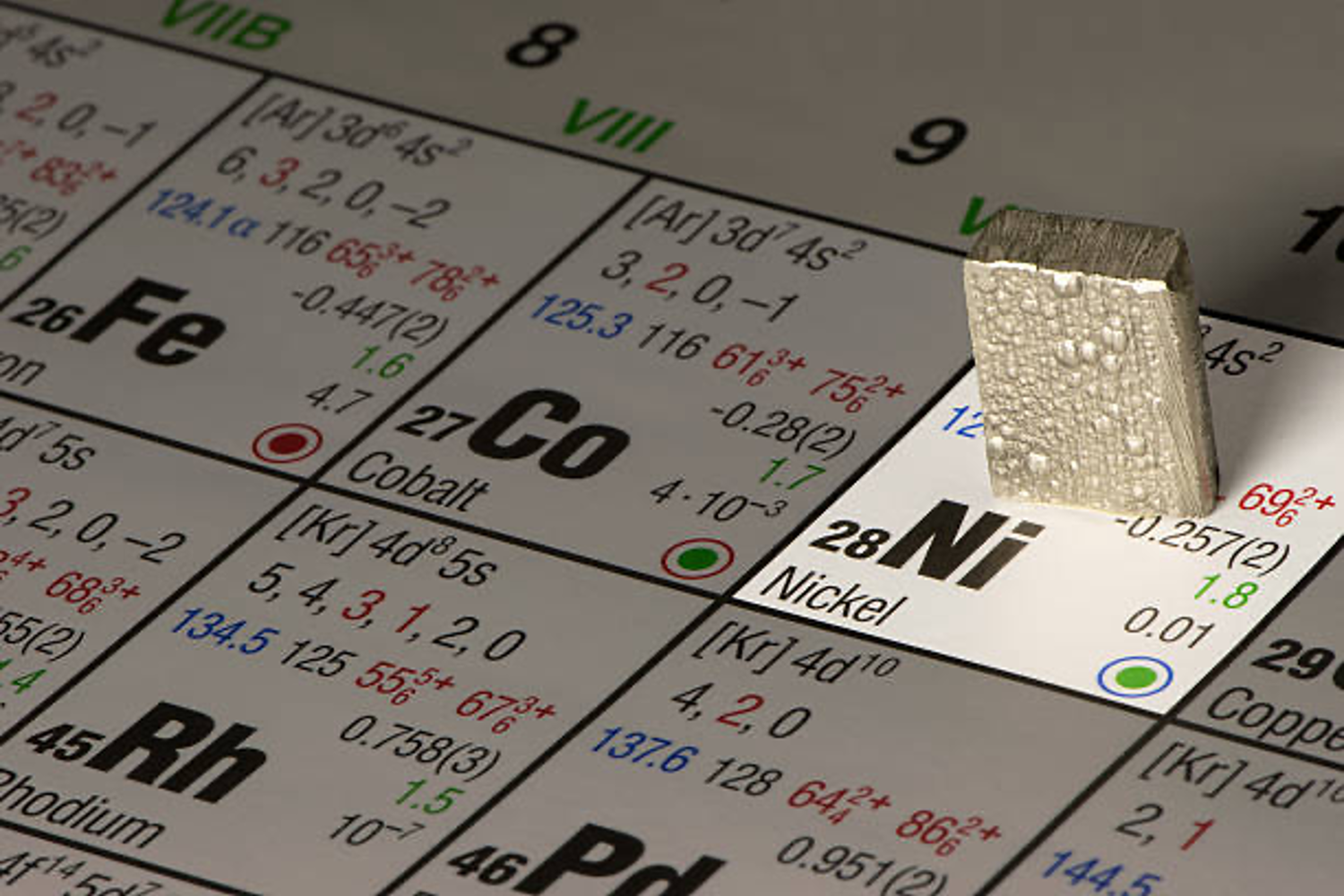

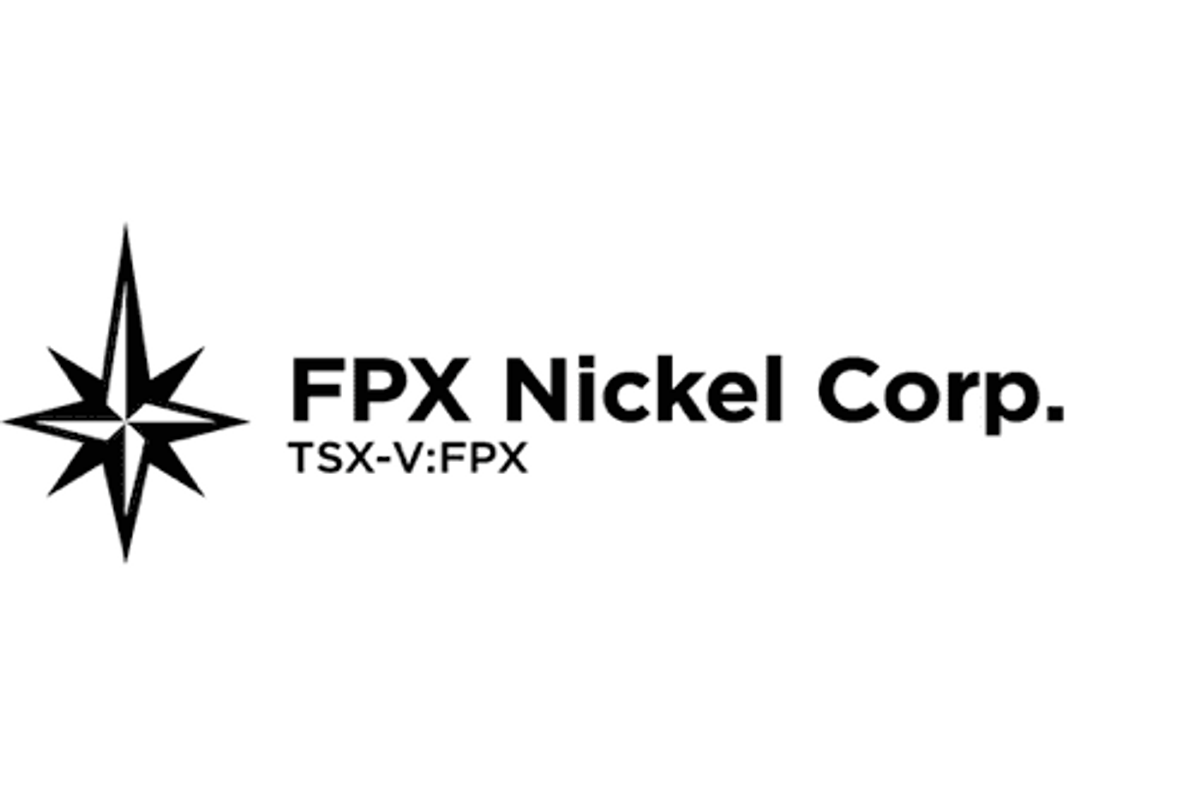
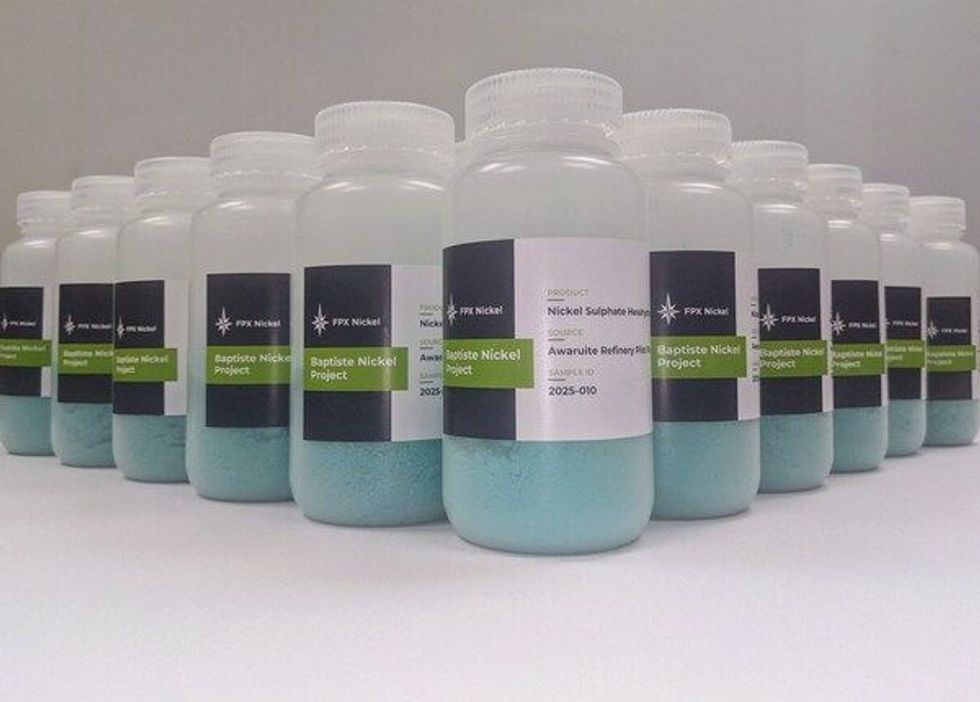
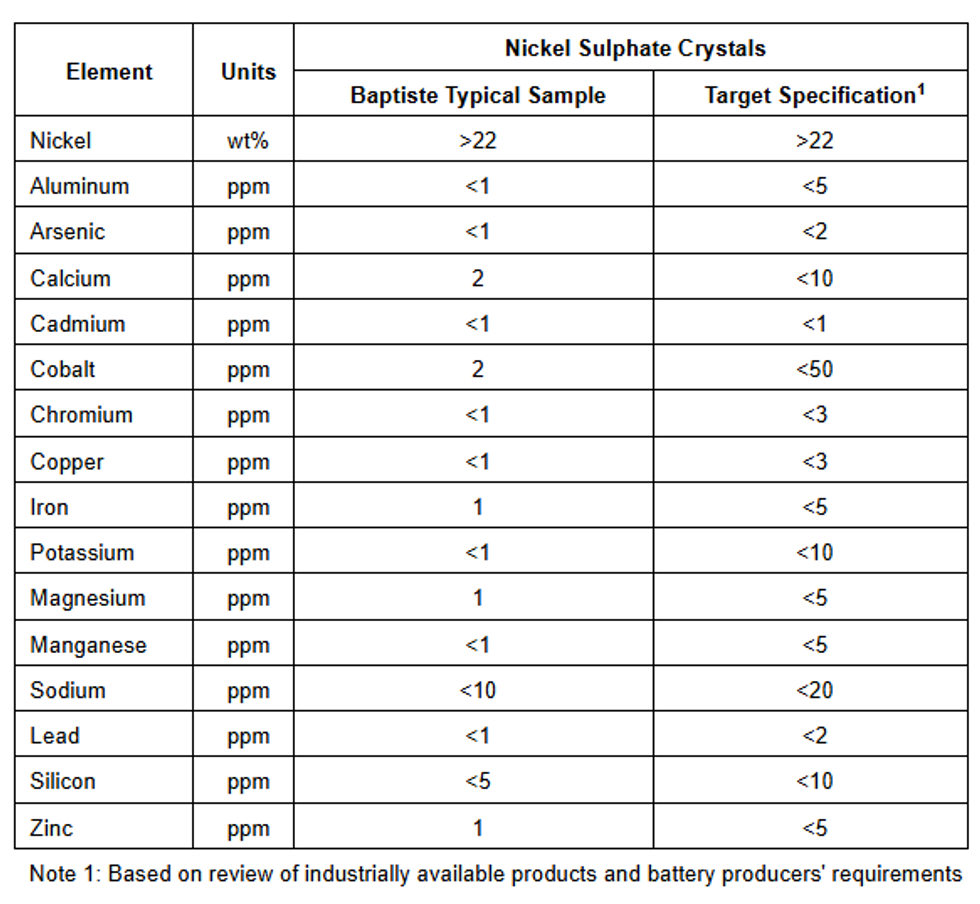 Table 2 – Baptiste Nickel Sulphate Crystal Quality vs. Target Specification
Table 2 – Baptiste Nickel Sulphate Crystal Quality vs. Target Specification